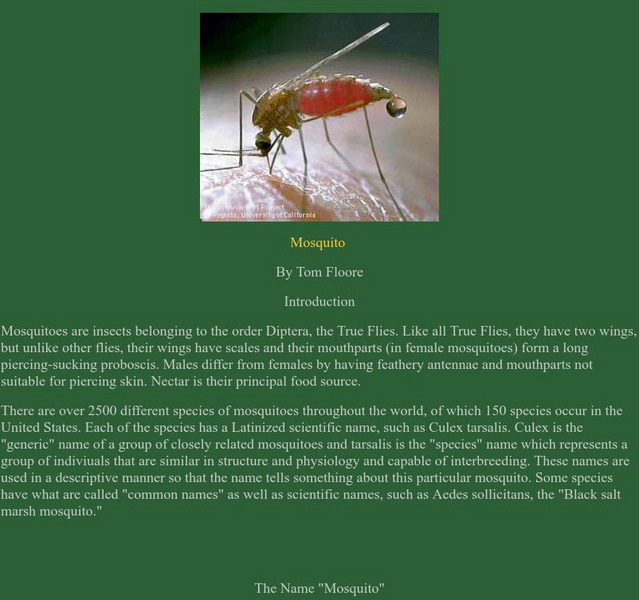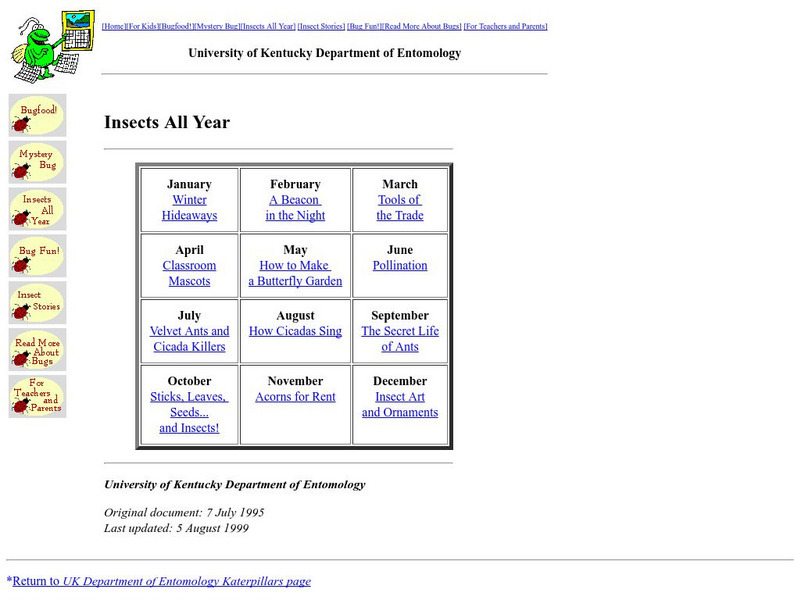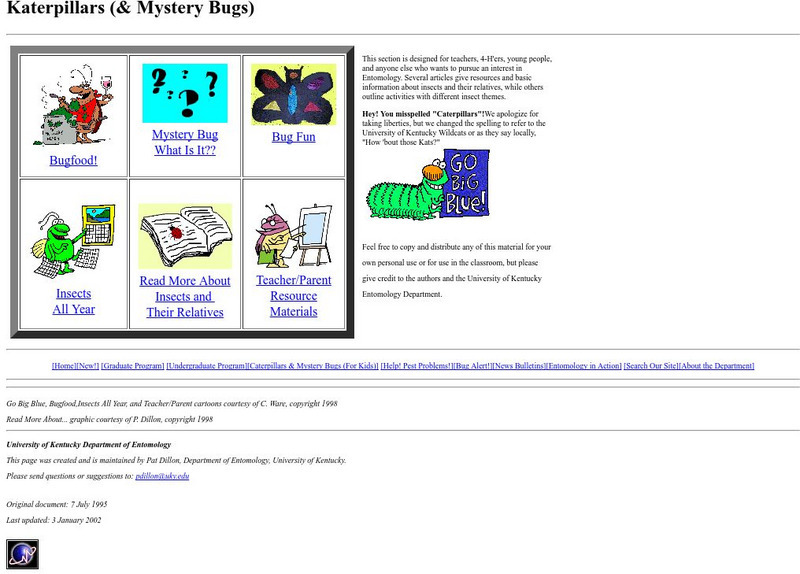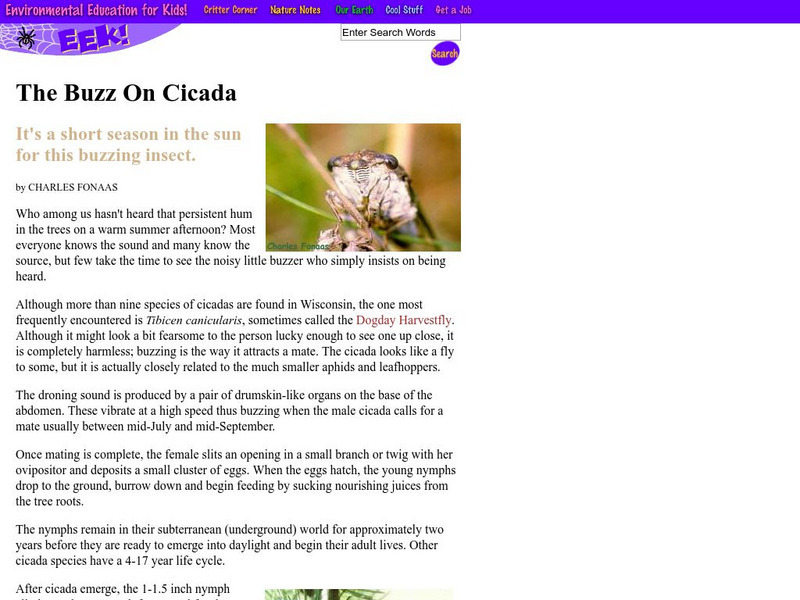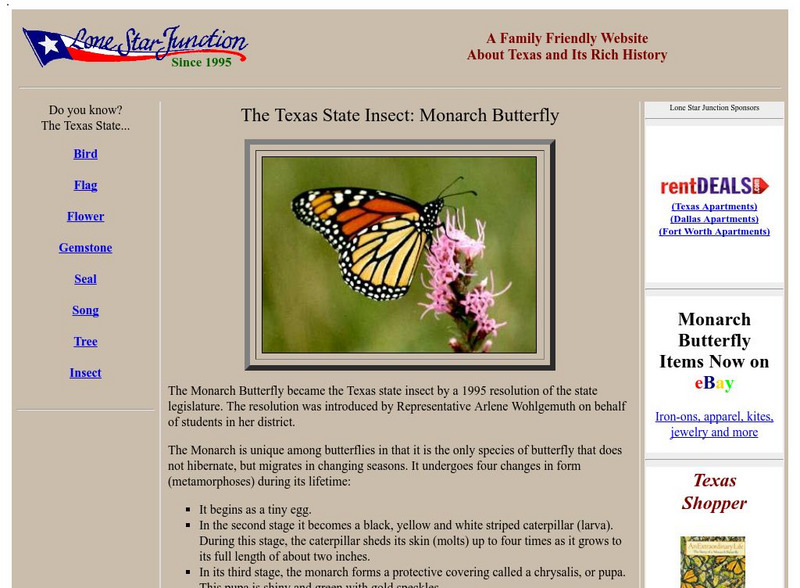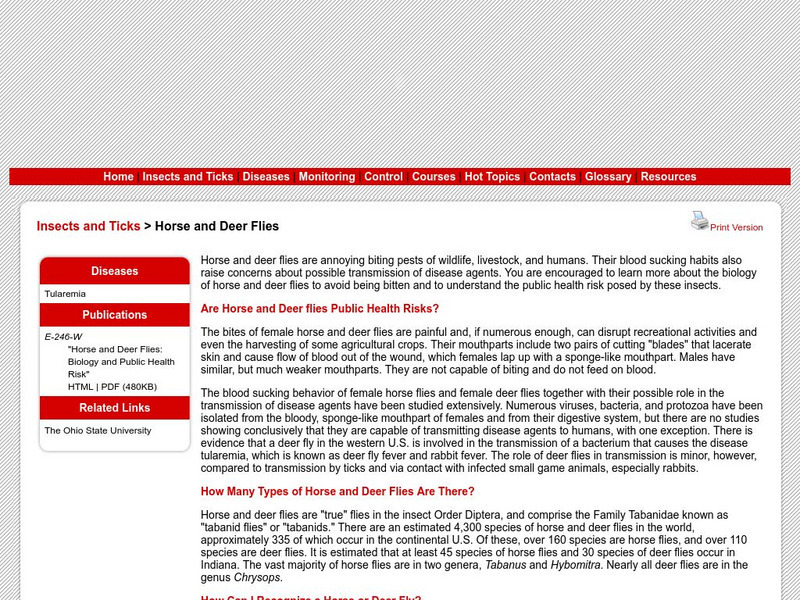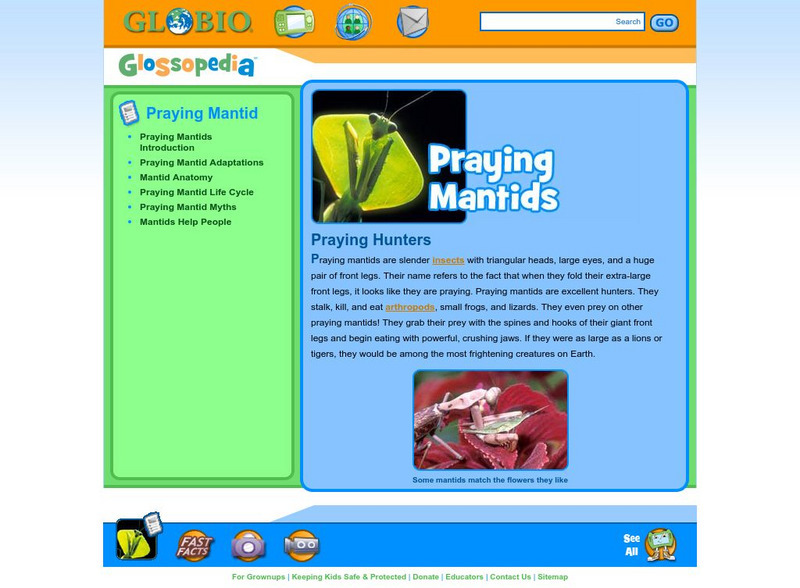Hi, what do you want to do?
Enchanted Learning
Enchanted Learning: Pond Life Animal Printouts
Filled with printable pages of both plant and animal pond life, Enchanted Learning features fact sheets with color pictures.
Colorado State University
Colorado State: Insect Parasitic Nematodes
This site provides a general overview of the Insect Parasitic Nematodes (a small round worm). Content includes a look at this worm's life cycle and its benefit/impact on the environment as biological insect control.
Other
Iowa State University: Bug Guide
Here's an easy to use guide for identifying insects. All you have to do is click on the image that looks like your bug, then read all about it! There's lots of information about the insect; including food, life cycle, range, and habitat.
Canadian Wildlife Federation
Hinterland Who's Who: Mosquito
Get the facts about mosquito. Besides finding a detailed description of these pesky insects, you'll also learn about some of their unique facts and characteristics. Also included in this Insect Fact Sheet on mosquitoes is information on...
Museums Victoria
Museum Victoria: Bugs
Students learn what insects are, how they live, how they find food, how they defend themselves, and how they affect humans. Organized into several articles accompanied by high-quality photos and video, this online exhibit provides...
Texas A&M University
Texas A&m University: Field Guide to Common Texas Insects: Silverfish
Read a description of the silverfish and its cousin, the firebrat. Learn of their habitat, food source and life cycle.
Other
Tom Moore, Mulrennan Research Center/ Mosquito
The first section describes the general characteristics of the mosquito
Iowa State University
Iowa State University: Iowa Insect Information Notes Flies
Flies are almost always known as pests, especially the types called gnats that bite! These information sheets provide descriptions of several types of flies as well as life cycles and ways to reduce these annoying bugs.
Australian Museum
Australian Museum: Beetles
This thorough site provides a general overview of beetles and focuses on topics such as habitat, anatomy, life cycle, feeding, predation and defense, and beetles as pests.
University of Kentucky
University of Kentucky: Insects All Year
The University of Kentucky provides information and activities about insects for each month of the year. Projects include art and observational activities.
University of Kentucky
University of Kentucky: "Katerpillars" (& Mystery Bugs)
For younger students, these insect-themed activities, treats, and crafts also feature teacher resources and book references.
Science Museum of Minnesota
Science Museum of Minnesota: Journey North Cluster
An elementary resource to learn about butterflies and their migration with links to a wide variety of activities.
Environmental Education for Kids
Eek!: Cicada
This site provides a brief but concise description of this interesting insect. Grades 4-8.
TeachEngineering
Teach Engineering: Dams
Through eight lessons, students are introduced to many facets of dams, including their basic components, the common types (all designed to resist strong forces), their primary benefits (electricity generation, water supply, flood...
Lone Star Junction
Lone Star Junction: The Texas State Insect: Monarch Butterfly
Some facts about the monarch butterfly, which is the state insect of Texas.
University of Nebraska
University of Nebraska State Museum: Parasite Sleuth: Where Parasites Live
This site highlights 10 parasites, including worms, insects, ticks and microorganisms. For each organism you can get information concerning their life cycle and geographic distribution.
Canadian Museum of Nature
Canadian Museum of Nature: Monarch
The Monarch butterfly is widely studied by students when they learn about insect life cycles. Basic information about the Monarch and threats to its survival are described here. There are also pictures showing the Monarch in various...
National Institutes of Health
National Library of Medicine: Entomology in Action
Two lesson plans are found in this site. Lesson Plan 1 is geared to grades 6-9. In this plan, student's will be able to list the different stages of the blow fly's life cycle and understand how the life cycle and ADH (accumulated degree...
Other
Fermilab Flora and Fauna Virtual Exhibit: The Monarch Butterfly and Milkweed
This site traces the life cycle of the monarch butterfly and contains links for more in depth study of the terms presented.
Saint Louis Zoo
Saint Louis Zoo: Monarch Butterfly
Learn animal facts about the appearance, behavior, life cycle, and diet of the monarch butterfly.
Rutgers University
Rutgers Center for Vector Biology: Mosquito Biology
This page covers the life cycle, habitats and other details about mosquitos.
Museums Victoria
Museum Victoria: Bugs: Glossary
Glossary of terms commonly used to describe bugs, their habitat, and their life cycle.
Purdue University
Purdue University: Medical Entomology: Horse and Deer Flies
Horse flies and deer flies are significant pests to both humans and animals. This site describes their life cycles, feeding patterns, and some methods of controlling them.
Globio
Glossopedia: Praying Mantid
Praying Mantids are excellent hunting insects found throughout the world. Various species of mantids, their life cycle, hunting habits, and habitat are described.










